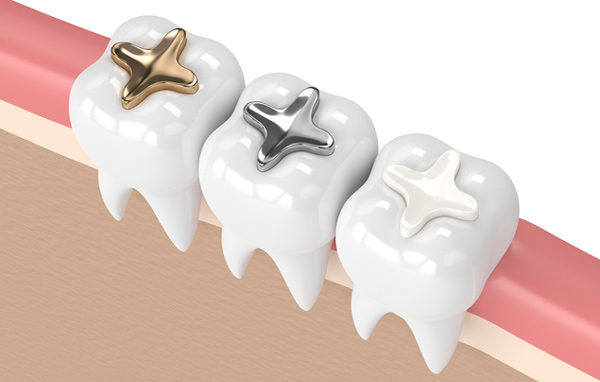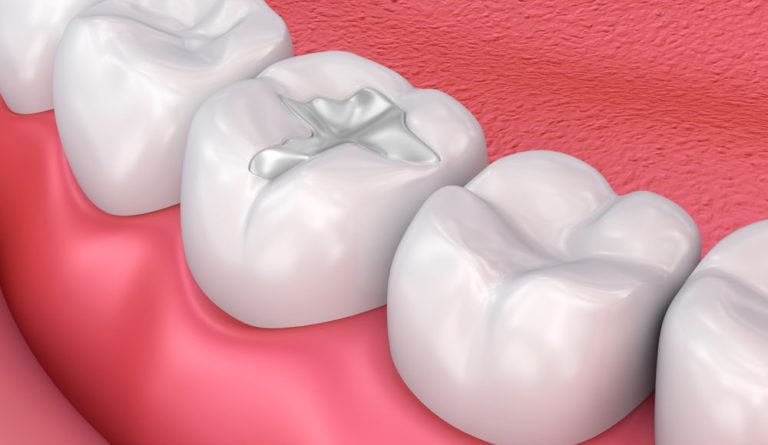Dental Fillings/Restoration
A Natural Tooth appears to you as

And this is its inside story....
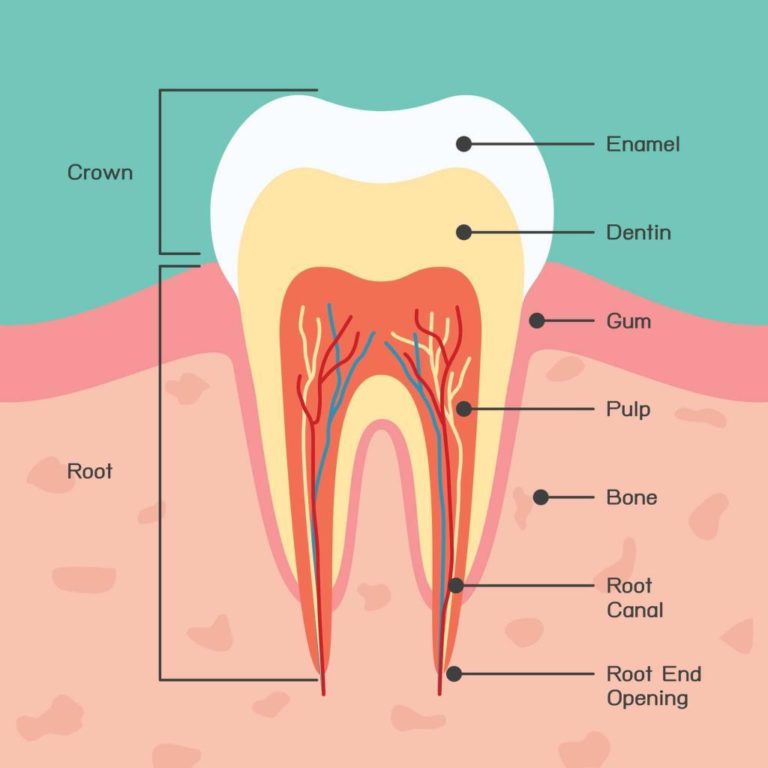
An infected tooth's journey
A tooth in face of infection may shift from a healthy one to an infected one with caries resulting in a cavity. The picture below depicts the sad journey of one such tooth.
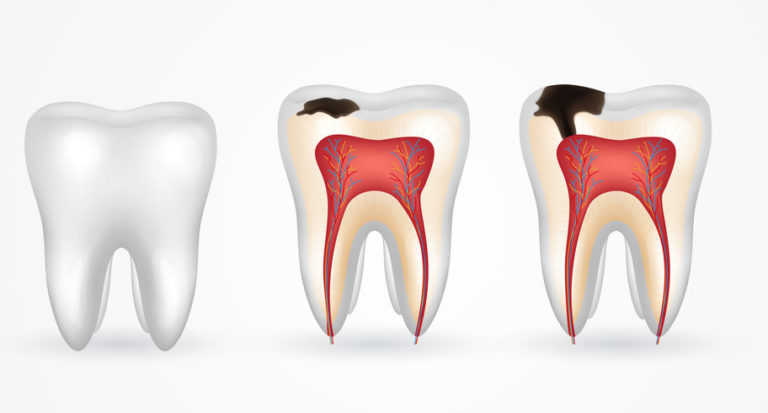
What are FILLINGS?
Dental cavities are one of the most common dental problems faced by people of all age groups around the world. In fact, cavities are quite common in children due to sweets, chocolates, sodas, and frequent snacking.
During the early stages of infection, when the cavitation is still restricted till the ENAMEL and/or DENTIN the tooth can be restored to its prior Functionality, Aesthetics and Strength with the help of a FILLING or RESTORATION.
When left untreated, tooth decay can damage the whole structure of the tooth. This can even cause damage to nearby teeth, requiring complex and extensive dental procedures. As such, it is best to visit your Pediatric Dentist and get a filling done as soon as any sign of rot appears.
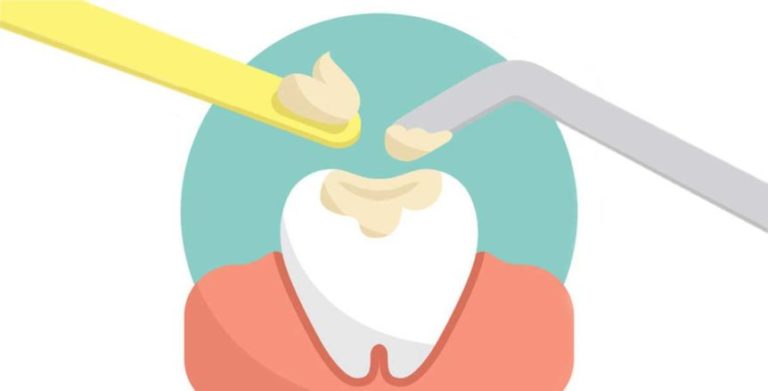
Steps in Filling
On the day of appointment, your child may be given local anesthesia to numb the area if necessary after which your Pediatric dentist will remove decay from the tooth, using hand instruments or a drill.
Once all the decay is removed, your pediatric dentist will shape the space to prepare it for the filling. Different types of fillings require different shaping procedures to make sure they are retained. Your dentist may put in a protective base or a protective liner to protect the tooth’s pulp.
- Some of these materials release fluoride to protect the tooth from further decay.
- Certain types of fillings get hardened by a special light. With these fillings, your dentist will stop several times to shine a bright light on the resin. This cures (hardens) the material and makes it strong.
Finally, after the filling is secured in place, your Pediatric dentist may use burs to finish and polish the tooth.
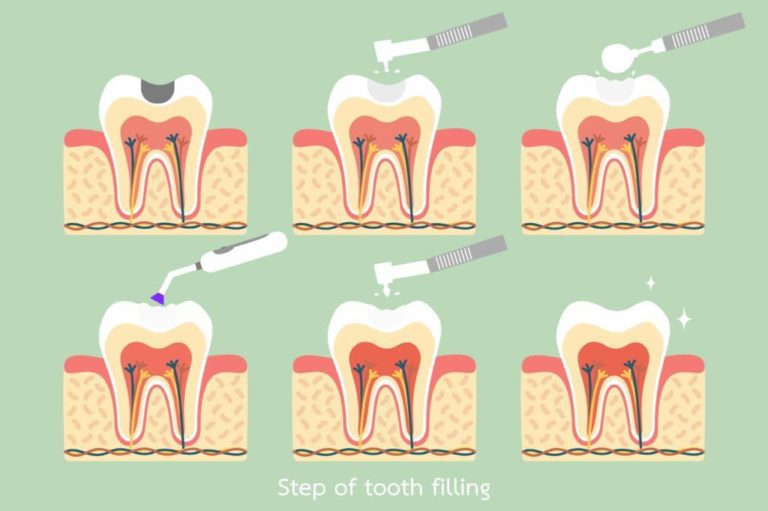
Types of Fillings
Fillings vary in complexity and material. Based on the method of placement they can be of two types. Some are direct fillings, placed “directly” in a cavity, although others are indirect, wherein an impression of the tooth is taken and a custom filling is created to fit around it. Your Pediatric Dentist can suggest a tooth restoration knowing what’s the appropriate material for a particular tooth condition and can help you make the best choice for your mouth.
Based on the type of material used the fillings can be classified as Cement fillings, Resin-Modified Cement fillings, Composite fillings, Amalgam fillings and Gold fillings.
Glass Ionomer Cement
Glass ionomer fillings are tooth coloured filling material often used on the primary teeth or to fill in small areas of decay, as they tend to be very delicate and take considerable wear and tear. These material are strong enough to bear occlusal stress in primary teethbut when used on a permanent tooth, this type of filling is usually placed in a spot that isn’t subject to extreme pressure or chewing action.
A much stronger variation of this material is the Resin Modified Glass Ionomer cement that has considerably more load bearing capacity and more compressive strength and tensile strength than the conventional Glass Ionomer.
Composite
A composite tooth filling, typically made of powdered glass and acrylic resin, offers considerable advantages over an amalgam filling. For one, the filling can be shaded to match the color of a person’s existing teeth, making it much less visible and quite aesthetic. As more people want natural-looking smiles, composite fillings have become increasingly popular. They have sufficient occlusal stree bearing capacity to be placen in the posterior grinding teeth.
Amalgam
You might think of amalgam fillings for teeth as a classic option. According to the Food and Drug Administration, dentists have been using this type of filling for more than 150 years. As the name suggests, amalgam fillings are made up of a mixture of metals. They typically contain about 50 percent mercury, along with tin, copper, silver or zinc. Compared to other types, amalgam fillings have a few things going for them: They are the least pricey option, and they’re also very strong and long-lasting.
Amalgam fillings aren’t without drawbacks, though. They’re silver in color to start and tend to become darker with time, meaning they are a fairly conspicuous item when you open your mouth. And although the FDA has determined that the level of mercury in the filling is safe for people over the age of six, children as well as parents prefer not to have a filling made from this material.
Porcelain
Porcelain fillings are a form of indirect filling. It usually requires more than one visit to the dentist for one filling and tend to be very pricey. They look like actual teeth and can help your child maintain a natural appearanc
Ultimately, the Pediatric Dentist along with the child patient and their parents together make a combined decision about the type of filling material to be used based on the particular need of the child.

